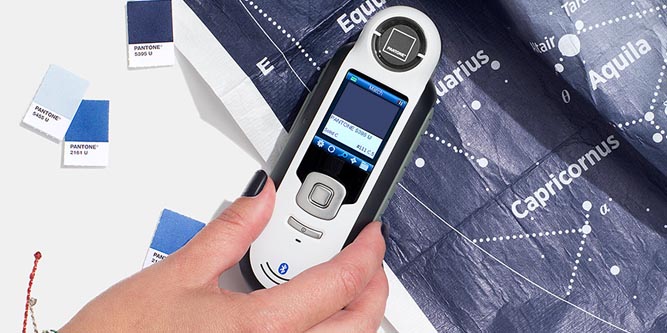- This topic has 7 replies, 3 voices, and was last updated 4 years, 9 months ago by .
- Wide-gamut display plus colorimeter on the other 1. I’m confused, and I certainly don’t want to buy both. Maybe it helps to set this in context: I’m a somewhat enthusiastic hobbyist photographer, image quality is why I bought a DSLR and two primes, but I’m not a professional.
- Overall, the SpyderX Elite is the best display colorimeter on the market.

Best Colorimeter 2020
Jul 22, 2019 Hi, I'm calibrating my monitor (Acer XF270HUA) using a ColorMunki Display. After reading the documentation, I see it says to use a colorimeter correction for the best results. I imported colorimeter corrections for my ColorMunki Display as well as checked the colorimeter corrections database and found a matching CCMX here. My question is, which one Continue reading Choosing the best. Innovative future. Meet the newest Hach pocket colorimeter How do you make the best portable colorimeter on the market? Start with the tried and true Hach Pocket Colorimeter II – one that has been used by hundreds of thousands of water professionals in harsh conditions for almost two decades – and make key mechanical improvements: upgraded waterproofing; larger display.
Hi,
What colorimeter should I buy?
I’m a bit overwhelmed by the available choices. What would you suggest to buy? It is important to me that I can use it with open source software, so the less hassle it causes with DisplayCAL, the better.
Color management is completely new to me. Actually, I also have to buy a new monitor (should be 24″), and I want to establish a color managed workflow for photography. So suggestions for monitors are welcome as well.
For Monitor and colorimeter together, I’d like to stay below 1000€.
For warranty, I’d rather not buy second hand.OS: Linux
Raw converter: Darktable
Use case: DSLR still photographyThank you very much!
Stefan- This topic was modified 4 years, 9 months ago by .
On a budget Colormunki display is a solid choice. Do you intend to do prints of your photos?
i1Display Studio on Amazon
Disclosure: As an Amazon Associate I earn from qualifying purchases.Unless you want to make your own prints your money is better spent on Colormunki display and the monitor. You want to look at wide-gamut IPS displays. I’d start here http://www.tftcentral.co.uk/articles/monitor_panel_parts.htm after you find a size and resolution you like (with <90% Adobe RGB coverage) go to panel search and look for local deals on models using that panel part.
Do you intend to do prints of your photos?
Yes, I want to have prints look more like what I see on the screen (or vice versa).
In that case, a spectrometer is pretty much a requirement, because you can’t use a colorimeter for reflective measurements. But the type of printer also plays a role, e.g. inkjet is more easy to profile (doesn’t drift as much) as color laser, for example.
Measurement takes longer on on low intensities. Is this true? Is this a problem (I don’t mind if it takes a few hours?)
It is true that affordable spectrometers (which includes both the ColorMunki aas well as the i1 Pro/Pro 2) are relatively slow and less precise on lower intensities in comparison to a reasonably fast and sensitive device like a ColorMunki Display (even moreso compared to an i1 Display Pro). If this is a problem or not depends a bit on the display technology. Spectrometers usually can’t read as low as a good colorimeter, and this may impact overall precision. I wouldn’t recommend a spectrometer if the display’s contrast ratio is over (roughly) 1000:1. Also, you may have to take the instrument off the screen after a certain amount of time to refresh the self-calibration, which can be a bit of a hassle (you’ll get a prompt asking you to do it).
How does spectrometer self-calibration work?
Usually by putting the instrument on a reference tile (often made out of ceramic) and measuring it. In case of the ColorMunki Photo/Design, the instrument has a built-in reference tile, and you rotate the instrument’s dial to “self-calibration” position to do this measurement.
Oh, I’ve caused a misunderstanding with above statement: I intend to have a select few of my photos printed by a proffesional shop.
It can be hard or even impossible to match monitor & print if the printing process isn’t tightly controlled by the service provider (unless you talk about contract proofs where this is typically the case). Ask them if they provide print profiles for the type of printer and paper you intend to have prints made on, and ask them about typical deltaE variance of their printing results (you can probably consider yourself lucky if they even know what the latter means).
wide-gamut display plus colorimeter on the other [1].
I consider this to be less of a problem because:
- Devices like the ColorMunki Display come with (generic) spectral corrections that usually lead to acceptable results, and
- The main challenge in a good screen-to-print match comes from having an accurately profiled printer and stable printing process as well as matching the paper white simulated on screen (using softproofing) closely to the appearance of unprinted paper under your viewing illuminant. The former (printer) is largely outside your control if you use a service provider, but the latter can usually be achieved relatively easily with a bit of patience and careful setup.
Best Colorimeter For Oled
You must be logged in to reply to this topic.
Best Colorimeter Reddit
Log in or Register